“The role of a helmet has never changed,” says Brian Weston, the Managing Director at Arai Helmets, amid the official reveal of Arai’s all-new Corsair-X helmet. “It’s protection.”
Westin’s 8:00 AM presentation, fueled by what must have been a second or third cup of coffee and seemingly unmatched passion for head protection, ends another hour and a half later, and yet without any mention of what colors or racer-replica graphics the Corsair-X will be available in. The point, made clear by Westin’s comments and sheer lack of emphasis on style, is that Arai is more worried about building the most protective helmet possible than the most eye-catching one.
Arai’s performance-over-style philosophy has resulted this year in a number of updates to the Corsair's ventilation system, shield system, and shell, the latter of which is constructed using resins that are stronger and lighter than the outgoing substances, Arai claims. The Corsair’s round, smooth shell shape remains, yet Arai has relocated the side pods away from the Snell line (where the helmet is tested per Snell standards) and actually increased the smooth, round area from the top of the pods to the top of the helmet by 24mm. Arai is a proponent for making helmets glance off the ground in the event of a fall, and a larger smooth area at this part of the helmet helps facilitate these types of impacts.
Lowering the helmet’s side pods causes a problem with shield/shell clearance, an issue Arai has resolved with the introduction of its Variable Access System (VAS) shield system, which uses a continually moving axis point to help the shield clear the shell. The procedure for shield swaps has changed as a result of Arai transitioning over to the VAS shield system, though not to one that we imagine will make many friends. Of course that wasn’t the intention, Westin says: “Arai designs the shield system around the shell, not the other way around. This shield is developed so that we could make the helmet shell a better one.” Afain, for Arai, it's performance over everything else.
The chin bar on the Corsair-X was modified and the area relative to your lips enlarged by 3mm so that you're not kissing the helmet's insides all ride long, while Arai has also made the helmet's interior shape a bit longer, a benefit for long-oval shaped heads. The rest of the changes pertain to the vents, almost all of which have been tweaked. Top diffusers are 20mm longer and straighter for better aerodynamics on the street, Arai claims, plus have a bump at their leading edge for increased velocity (think air speed for air traveling over the top of a plane's wing). On top of that, a new center vent is said to provide 11-percent better airflow, while enclosed side air channels are claimed to reduce wind noise and pull more air and moisture out from behind the visor. Three-position slide switches on each of the front vents enable the helmet to be quieter when closed, plus block water in the event of rainfall. Arai has also incorporated a new F1-style latch mechanism for the shield, which is not a lock, but is said to capture the shield so that it's less likely to open in an impact.
Additional changes to the inside of the Corsair-X include a new Eco-Pure anti-microbial liner that's claimed to stay fresher longer by helping maintain a neutral PH balance close to the skin, a new chin curtain that is claimed to block turbulent air from entering the underside of the helmet, and replaceable top pad that allows for more customized fit.
Fortunately, the Corsair-X that we had the chance to try for the first time during a track day at Thunderhill Raceway Park fit true to size, and we didn’t have to make any adjustments to the padding to alter the fit on our head. In fact, the helmet fit exceptionally well right out of the box and ultimately required almost zero break-in time, a nice feature. The X is claimed to weigh about the same as the Corsair-V (weight saved by the shell's new, 30-percent lighter resins is offset by larger diffusers and new latch mechanism), but still feels exceptionally light on your shoulders. Additionally, the liner provides session-long comfort, without chafing or irritating your skin.
In a tuck position at the track, and with the rear wing set to its raised position, the Corsair-X felt stable and still aerodynamic. Visibility out the shield is good, and despite the mercury in the track-side thermometer nearly pushing through the top-end of the tube on this 90-plus-degree day, the inside of the helmet didn’t feel like an oven. We broke a sweat, sure, but overall the vents did a great job of flowing air over our head and keeping us cool. Compared to the Corsair-V, air flow is much improved. The vents are easier to open and close, too, even with full roadrace gloves on.
Back at home, we wore the Corsair-X while riding everything from a naked FZ-09 to an R1 (not to mention in a back-to-back comparison with the Corsair-V) and noticed a marginal improvement in internal noise level. The X is still not the quietest helmet on the market, but it is quieter than its predecessor, a likely benefit of the helmet's new chin curtain, which keeps turbulent air from coming up and in from the underside of the helmet.
Unfortunately, on the street and in a more upright seating position, we also noticed that the helmet is less aerodynamic than some of the other top-tier lids we've been wearing recently. We tried lowering and raising the rear wing to get the feeling we were hoping for, but it was half one way, half the other; With the wing up, the helmet has a lot of drag, while with the wing down, the helmet buffets more. There’s no doubt that Arai’s egg-shape helmet design helps protect the rider in the event of a crash, but in our testing we've come to discover it’s not the most aerodynamic design either. Is protection in a crash worth a little drag or buffet on the road? That’s a question we'll let you answer for yourself.
As for the new shield system, the answer is that, no, it is not any easier to operate than before—at least not in our opinion. Do shield swaps often and you might be able to perfect the process, but don’t and you’ll feel like you’re playing with a Rubix Cube. Though at least not blindfolded, as the side pods on the Corsair-X now pop off during swaps, enabling you to see what you’re working with. The problem, in our opinion, is that there are just too many steps in the shield-changing process. Does the shield have to be half up when you go to push the pin in place or all the way up? What about when you go to pop it off? These are questions you'll ask yourself for the first five shield swaps, at least.
Lastly, while we appreciate the extra space near the mouth area, we also felt like the Corsair-X is slightly more difficult to get in and out of than the Corsair-V. Not dramatically more difficult, mind you, just enough to notice.
What we try to keep in mind through all of this, though, is that the Corsair-X is designed first and foremost to perform as well as possible in a crash. Arai has made an effort to increase comfort, keep weight down, and improve ventilation—all of which it has done—but going beyond that it has made a helmet that is as safe as it possibly can be.
And while we have not had the chance to test that aspect of the lid, we do feel safe in it. If you’re a serious trackday rider, racer, or even just someone who wants the reassurance that Arai’s emphasis on safety provides, we think the Corsair-X helmet is worth a look.
Regardless of what graphics it’s available in…
Retail for the Corsair-X ranges between $839.95 and $849.95 for solid colors, but goes up to $969.95. Hit the Next button on the gallery below to see more detail photos of the helmet.










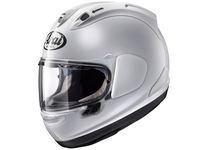

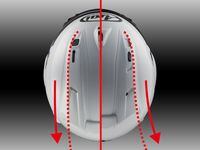


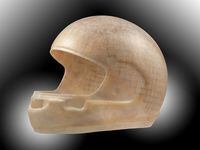
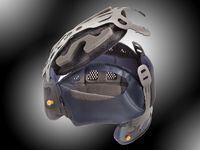
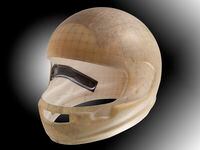
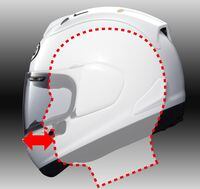
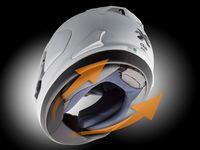
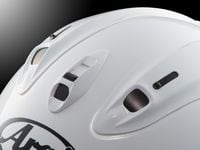
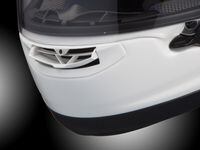
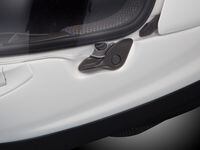
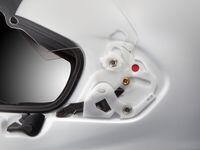
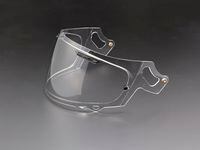


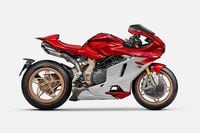
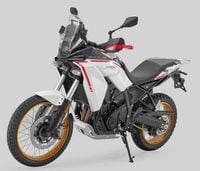


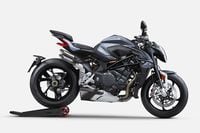

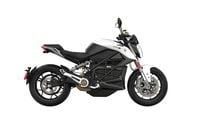
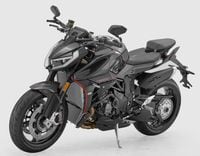




/cloudfront-us-east-1.images.arcpublishing.com/octane/URQMNYZZ6ZBM5LXGREBV3Y72OM.jpg)
/cloudfront-us-east-1.images.arcpublishing.com/octane/XH2ETEU4NVGDFNQO2XT2QQS5LU.jpg)
/cloudfront-us-east-1.images.arcpublishing.com/octane/DUGAQC2GQJCXFILEECQK2Q6T7I.jpg)
/cloudfront-us-east-1.images.arcpublishing.com/octane/4OGCCVR7WZGYDOWK4CGDTHXITA.jpg)
/cloudfront-us-east-1.images.arcpublishing.com/octane/GQV7Y6XT6FGZDIXO4P2IVJNSYE.jpg)
/cloudfront-us-east-1.images.arcpublishing.com/octane/X47GL62AXNALRHQLLBELY5WRMY.jpg)
/cloudfront-us-east-1.images.arcpublishing.com/octane/7OY2GP3FWFEDVEMDSLNGM6PZRM.jpg)
/cloudfront-us-east-1.images.arcpublishing.com/octane/Y3XYCFONBBBAHN6BWJDTWDY3FE.jpg)
/cloudfront-us-east-1.images.arcpublishing.com/octane/P3DLTISFGJA43L5QXVH7365UNY.jpg)
/cloudfront-us-east-1.images.arcpublishing.com/octane/H6FFG4YQMREO3DTADIJMECNS7Y.jpg)